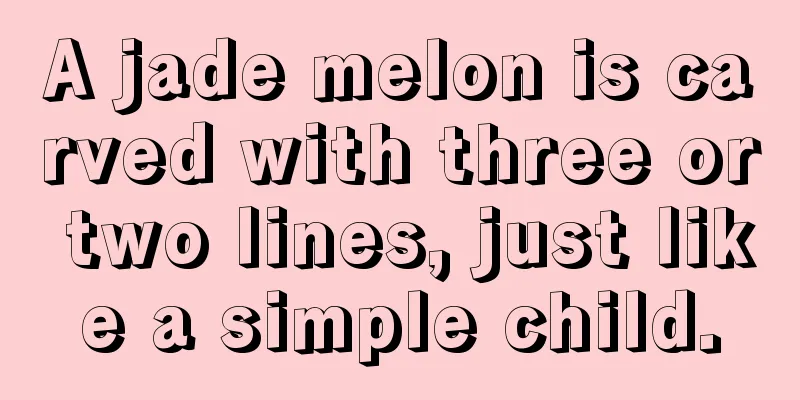How to identify the authenticity of jadeite?

|
1. Color. The color of natural jade is natural and unevenly distributed. The green color is extended and generally has no fluorescence. 2. Sound. If you tap gently on natural jade, it will produce a crisp and pleasant sound. If it is an artificially processed product, it will produce a low, dull sound. 3. Polished surface. The polished surface of natural jade is delicate and smooth, with a strong glassy luster with oily luster. If you look closely at the polished surface, you can usually see a mottled porphyroblastic interlaced structure; at the same time, translucent to opaque white fibrous crystals can be seen, commonly known as "stone flowers". 4. Internal structure. After the jade is soaked in strong acid and alkali, the criss-crossing cracks inside can be seen under transmitted light. fcgc66 fcpf18 |
<<: Identification of genuine and fake jadeite
>>: The meaning of Ruyi Jade Pendant, don’t wear it carelessly if you don’t understand it
Recommend
Don’t know how to choose jade carving? Just look at these three points.
Everyone loves exquisite jade, especially carving...
Bean-type jadeite is not all low-end products, here is the analysis!
Are bean-type jadeite all low-end products? Altho...
Carving makes jade full of infinite possibilities of beauty
Carving craftsmanship has a long history in my co...
What is the best jadeite? Top-quality jadeite has three extremes
Emerald, As the darling of nature, Spread across ...
What is red-purple jadeite also called?
Today, let's talk about the classification of...
From the queen of the Shang Dynasty to Emperor Qianlong of the Qing Dynasty, why did all ancient emperors have a jade ring?
"After leaving office, I was penniless and c...
The ingenious role of the Emerald Golden Toad
With the continuous improvement of living standar...
Subvert tradition! The jade Buddha he carved was sold for 12 million
The first time I saw Master Wang’s Baby Buddha se...
Why does jade turn yellow and dry after you wear it at home for a while?
Recently, many friends have said: Jade becomes mo...
Affordable jade rings make you look like a big name
Since ancient times, Chinese people have been res...
Illustrated with pictures and texts, we teach you how to identify jadeite. This method is pretty cool, did you know?
However, today's jade market is full of mixed...
Dislike the ugly ancient jade! Do you know how hard it is to make them?
Jade is the essence of mountains, rivers and land...
Little knowledge about jade bracelets, a guide to avoid being cheated, haha
Jade bracelets are one of the jade products that ...
These identification methods of jade are not advisable
In addition, there are many widely circulated met...
Are there only natural A-grade jadeite certificates? Do B and C goods also have certificates? Summary of certificate viewing skills
Jadeite, as the king of jade, is the first jadeit...









